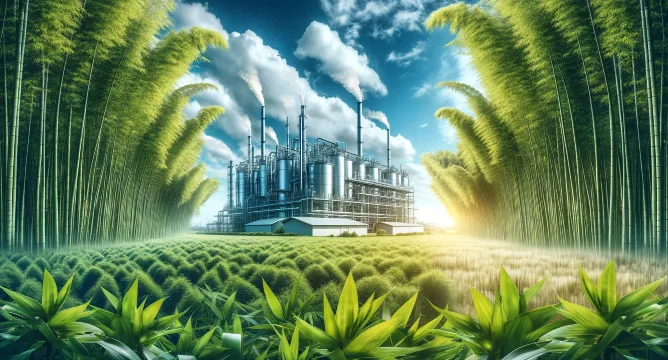In a groundbreaking study published in GCB Bioenergy, researchers are casting the spotlight on bamboo, suggesting it could play a pivotal role in the future of biofuels.
According to the paper, leveraging the rapid growth and carbon-sequestering abilities of bamboo for biofuel production could offer significant environmental benefits.
By undergoing processes such as fermentation and pyrolysis, bamboo can be transformed into bioenergy products like bioethanol and biochar, heralding a new era of sustainable energy sources.
Zhiwei Liang, the study’s lead author from the Hungarian University of Agriculture and Life Science, emphasized the need for further research. “Since the chemical composition of bamboo varies across different species, future research efforts should focus on gathering a more extensive collection of quantitative data for selecting species advantageous for minimizing biomass pretreatment time and cost,” Liang stated, highlighting the infancy of this promising venture.

However, the path to bamboo biofuel supremacy is fraught with skepticism and concerns reminiscent of past biofuel endeavors. The story of algal biofuel, once hailed as a savior for the planet, serves as a cautionary tale. Despite billions invested and years of research, algal biofuel failed to live up to its promise, with studies indicating it might produce more carbon than traditional petroleum-based diesel.
Critics also point out the environmental downsides of biofuels in general. Like fossil fuels, biofuels emit carbon when burned, and their production is criticized for being “inefficient land hogs,” leading to deforestation, water pollution, and biodiversity loss. The industrial production of biomass, including corn and wood pellets, has been linked to significant environmental degradation.
Moreover, the drive towards biofuel production intensifies food insecurity issues by diverting land away from food production to energy crops.
The New York Times highlighted the inefficiency of biofuels compared to renewable energy sources, noting, “It takes about 100 acres worth of biofuels to generate as much energy as a single acre of solar panels; worldwide, a land mass larger than California was used to grow under 4 percent of transportation fuel in 2020.”
Despite these challenges, policy support in the United States for renewable biofuels is growing, with the Environmental Protection Agency (EPA) proposing an increase in renewable fuel quotas. The new Renewable Fuel Standard (RFS) aims to boost the national fuel mix with renewable fuels by 9%, adding approximately 2 billion gallons more by the end of 2025, targeting over 22 billion gallons of various renewable fuel sources.
This policy shift has reignited debates over the environmental viability of biofuels.
Critics, like Tarah Heinzen, legal director for the environmental watchdog group Food & Water Watch, argue against the reliance on biofuels. “Relying on dirty fuels like factory farm gas and ethanol to clean up our transportation sector will only dig a deeper hole,” Heinzen said, advocating for a reduction in the volume requirements for biofuels in the Renewable Fuel Standard.

As the conversation around biofuels continues to evolve, the exploration of bamboo as a potential biofuel source represents both the promise of renewable energy and the complexities of balancing environmental benefits against potential ecological costs.
More To Discover
- Green Burial Movement: How Composting is Changing Our Approach to Death
- Vanuatu Stops Chinese Logging Firm Amid Theft Claims and Workers In Chinese Military Uniforms
- Amphibious Electric Vehicle Engineered for a Climate-Changed World
- Palm Oil-Based Organic Solution Can Protect Cattle from Pests Without Insecticides
The quest for sustainable energy solutions remains a dynamic and contentious field, reflecting the broader challenges of transitioning to a greener future.
Source: GCB Bioenergy





















